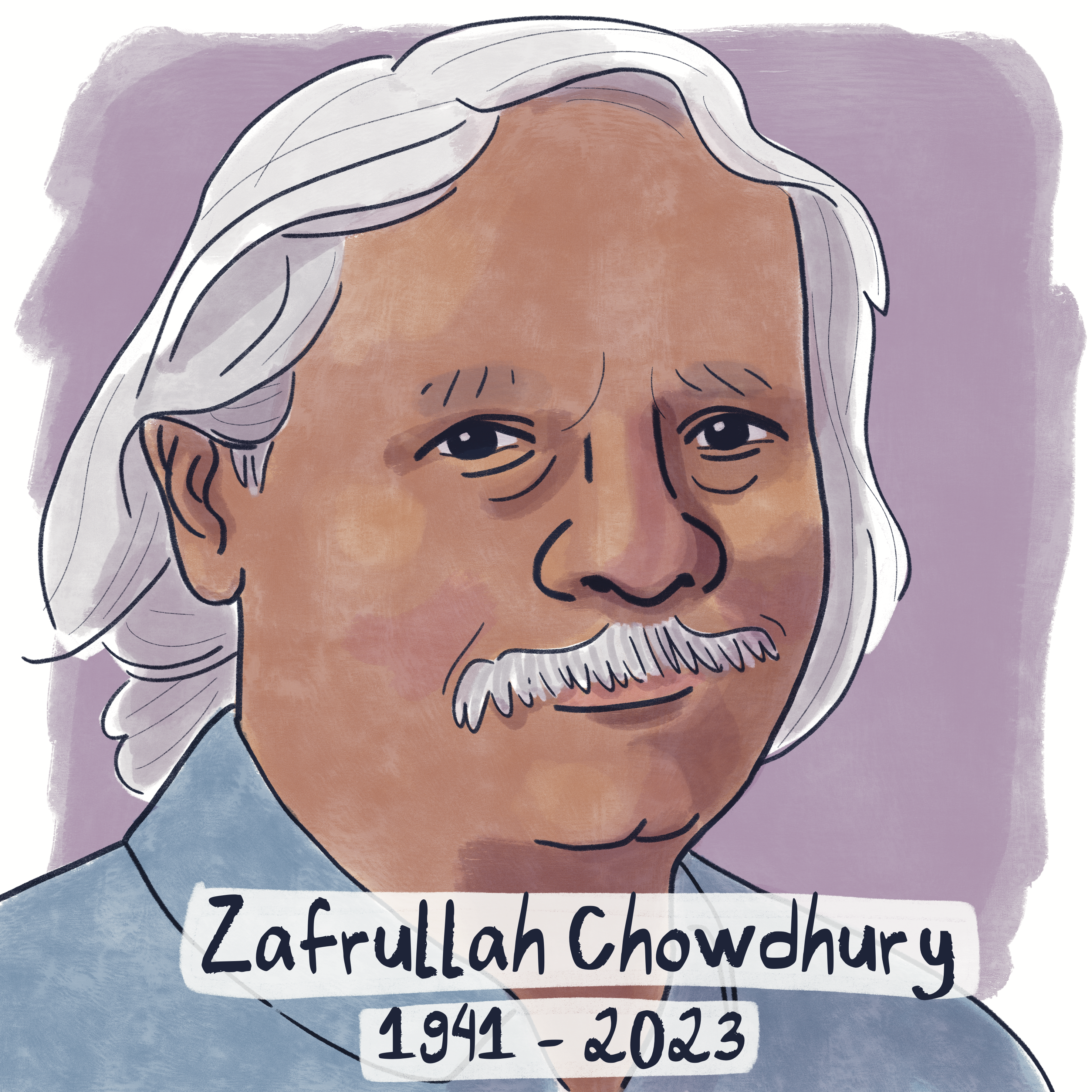✨The Feminists for a People’s Vaccine campaign mourns the loss of Dr Zafrullah Chowdhury and extends heartfelt condolences to our colleague and his life partner Shireen Huq, their children Brishty and Bareesh Hasan Chowdhury and the Gonoshasthaya Kendra family.
The world seems a little less hopeful without someone like Dr Zafrullah Chowdhury.
He founded the Gonoshasthaya Kendra in 1971, which in spirit and form meant people’s health. What started as a war hospital to treat the wounded became a state-of-the-art independent, and people-oriented facility working on health, women’s empowerment, disaster management, education, agriculture, and advocacy. The Gonoshasthaya Kendra Centre today remains an affordable treatment centre across Bangladesh with seven hospitals and 50 sub-centres, with young rural women as primary healthcare facilitators.
Dr Chowdhury was ahead of his time in introducing women paramedics, thus changing the health profile of Bangladesh forever. His innovations were a demonstration for the State on a model for framing public health systems, public enterprises and manufacturing and participation by the people. This valuable service and the development of the Kendra Center more broadly were only possible due to pioneering ideas by Zafrullah, such as the Bangladesh Drug Policy that he scripted and the push for the manufacture of generic drugs—the benefits of which are still being reaped by his country today, the region and indeed much of the developing world, as Bangladesh supplies affordable essential medicines to neighbouring countries. These integrated healthcare strategies even came to inspire the Alma-Ata Declaration of the World Health Organization.
✨The Feminists for a People’s Vaccine campaign mourns the loss of Dr Zafrullah Chowdhury and extends heartfelt condolences to our colleague and his life partner Shireen Huq, their children Brishty and Bareesh Hasan Chowdhury and the Gonoshasthaya Kendra family.
The world seems a little less hopeful without someone like Dr Zafrullah Chowdhury.
He founded the Gonoshasthaya Kendra in 1971, which in spirit and form meant people’s health. What started as a war hospital to treat the wounded became a state-of-the-art independent, and people-oriented facility working on health, women’s empowerment, disaster management, education, agriculture, and advocacy. The Gonoshasthaya Kendra Centre today remains an affordable treatment centre across Bangladesh with seven hospitals and 50 sub-centres, with young rural women as primary healthcare facilitators.
Dr Chowdhury was ahead of his time in introducing women paramedics, thus changing the health profile of Bangladesh forever. His innovations were a demonstration for the State on a model for framing public health systems, public enterprises and manufacturing and participation by the people. This valuable service and the development of the Kendra Center more broadly were only possible due to pioneering ideas by Zafrullah, such as the Bangladesh Drug Policy that he scripted and the push for the manufacture of generic drugs—the benefits of which are still being reaped by his country today, the region and indeed much of the developing world, as Bangladesh supplies affordable essential medicines to neighbouring countries. These integrated healthcare strategies even came to inspire the Alma-Ata Declaration of the World Health Organization.

